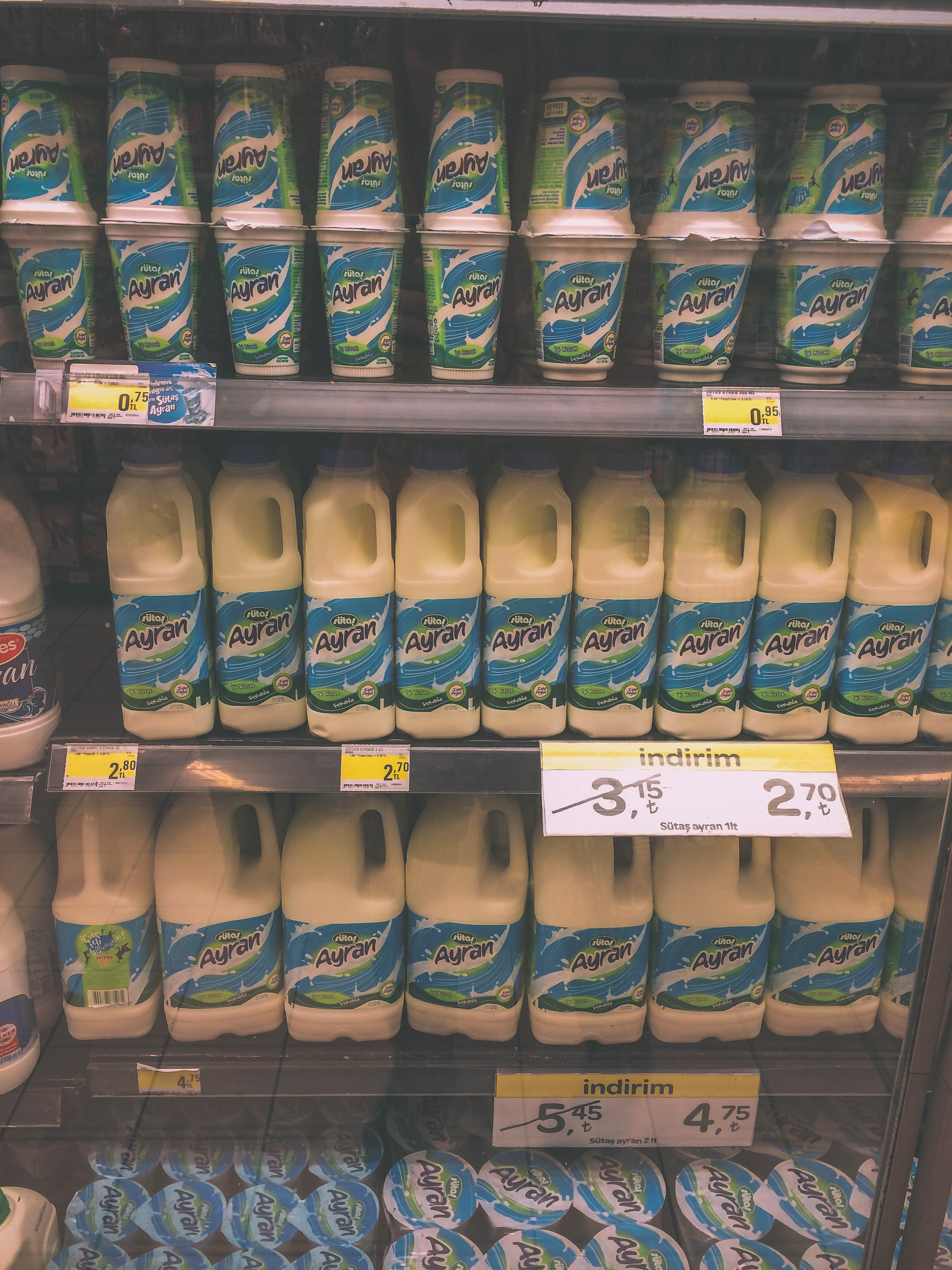Traditionally eaten for breakfast in Turkey, Börek is a cheese pastry made from thin sheets of phillo dough with filling. The most common fillings are cheese (mostly feta), minced meat or vegetables (mostly spinach). Usually Börek is prepared in a large pan an cut into small pieces before serving. It is one of the most significant and ancient recipes in the Turkish cuisine.
Our experience:
Actually we had Börek for the first time on the airplane flying into Istanbul, only at the time we had no idea what the little pile of crossainty dough was supposed to be. Realizing there was white cheese in between the layers we concluded that it was pretty good though.
Then on our first morning in Istanbul Omer took us to a café exclusively selling Börek. Enjoying our first real portion of this amazing dish with a strong glass of Turkish tea we already loved it.
Omer told us that any Turkish woman with respect for herself knows how to make Börek. And trust me this recipe is not a piece of cake… Cooking Börek involves creating a perfect dough smooth yet sturdy enough to be rolled out to a giant thin sheet. Using long wooden sticks they roll out small dollops of the dough onto large flat surfaces. Depending on the type of Börek cheese/meat/vegetables is applied and the dough is folded/rolled/layered before baking. Watching the process it almost seemed an art to us.
On the Northern side of the canal in Istanbul's Çengelköy area a large Börek shop by the water got especially famous. Locals flock to this place in the weekends and on holidays to enjoy famous variants of their favorite breakfast on the ‘restaurant’ patio overlooking the ‘Golden Horn’ canal. So of course Omer took us there. With him and his friend Ozlem we shared a large box of three variants of what became my personal favorite Turkish dish. Overlooking the water Ozlem read the grounds in my Turkish coffee, performing the art of ancient Turkish fortune telling. With the crusty top, soft layers and white feta-like cheese this anything but healthy pastry is a little piece of heaven.



















